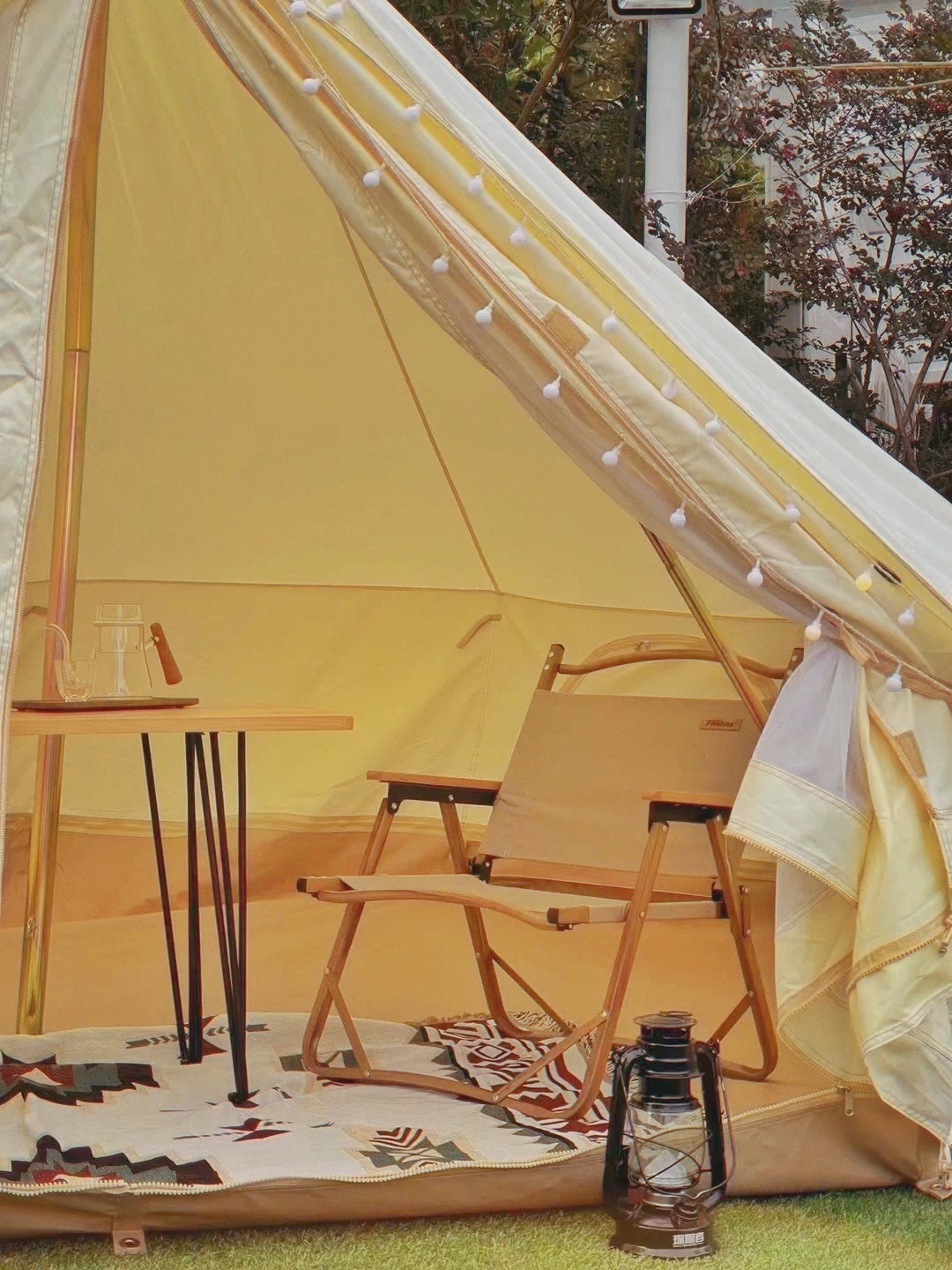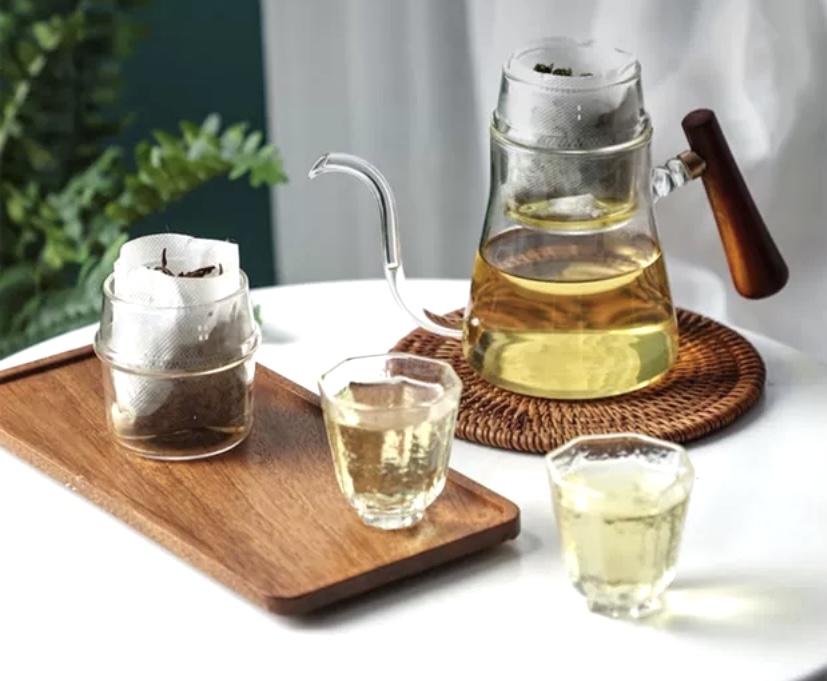Qing is the first clerk I got to know when coming to the T HOUSE, who is very patient and considerate. While I was enjoying the tea after ordering, she came to me several times to see if I needed any help. This undoubtedly provided an opportunity for me to start conversations with her. We have talked a lot and the information she narrated was fragmentary and involved many aspects. She especially introduced the basic situation of the store and the role of each staff there for me, and even took me to get acquainted with them or gave me their contact information.
- "Most of the customers consume in our shop for enjoying tea and chatting, or to take some photos. There are relatively few people would choose to order cakes or light meals. The store has always had a relatively stable flow of customers, due to its unique and elegant environment and high-quality products. "
- "Regarding the food ingredients for making simple meals, we usually purchase online using a supermarket APP one day in advance, but the cakes are produced and delivered by other processors. We often put cakes on a leaf for customers, that is because the wooden plate is hard to wash. Many shops would use a layer of disposable paper, which may waste lots of papers. Considering this situation, we chose the natural banana leaves instead, so that they could be easily degraded and back to nature."
- "One of my daily jobs is to wash and clean the glass tea sets and then put them in the disinfection cabinet to sterilize. After taking them out, they also need to be wiped dry in case leaving water stains, so I usually don’t leave work until after 10 o'clock in the evening."
Journal of T HOUSE in Shanghai
The Whole Life of a cup of Tea


Cong has been occupied in brand operation for nearly three years. He is responsible for brand promotion, business cooperation, as well as products research and development. Therefore, he has a very detailed and in-depth understanding of many aspects, such as product sources, processing and packaging design etc. He has real affection for this brand and is willing to share some of the information he owned.
- "Most of our tea products are in cooperation with some large-scale and qualified tea source manufacturers, which have their own tea farms and could customize products according to flavor requirements. Besides, we have our own tea garden in Qiandao Lake. At present, there are 12 kinds of tea for consumers choosing, some of which are mixed with flowers like jasmine and French Rose. The original tea leaves are produced in 6 different regions, such as Fujian, Taiwan, Yunnan and so on."
- "After completing the purchase of tea raw materials, we would transport them to a factory in Suzhou for processing into products and packaging. Before being products for sale, the factory must carry out safety tests for many times according to the requirements of food and drug supervision and administration, they cannot be put into stores for customers to purchase until reaching the standards."
Although Li is the youngest clerk in the store, but she is especially enthusiastic and generous. She has always been willing to share different varieties of tea with consumers for free, offering them a taste and would introduce the ‘birth’ or characteristics of the teas for them as well. The job she responsible for is focusing on customer serving. The long-term contact and communication with customers made her relatively more familiar with them and therefore own more relevant information in such aspect.
-"Most of customers come here mainly because of the unique and comfortable environment here. The wide space outdoors with simulated lawns can provide them with a space to do some activities and relax in the urban area. Here, customers are able to look up at the stars while drinking tea, and there are many landscapes can be used as the background for photo shooting. Therefore, in fact, only about half of customers would pay attention to the tea itself, and only about 15%-20% of customers show interests in learning about the sources of tea. In most cases, the customers involve in discussion about the origin of tea, processing and other information when the products are introduced by the shop assistants."
- "We often make tea for consumers by using glass tea pots. If customers need to take them away or have special requirements, we will use disposable paper cups to hold hot drinks or plastic cups to hold cold drinks, because the disposable cups could make customers feel more hygienic sometimes. In other cases, small paper cups are often used to offer consumers a taste of the tea. There are 30-40% of customers would take paper or plastic cups away approximately, but most of them leave the cups in the store."
Before Xiong became the store manager, he had a long history engaged in food and beverage business. Therefore, the position of store manager fits him right well thanks to his rich experiences. He manages the training of shop assistants and is responsible for various miscellaneous affairs in the store. One of his crucial duty is to arrange the stock and sale of all kinds of products, so he has mastered and could provide the information in these aspects, as well as some detailed and practical data.
- "Obviously, the amount of waste generated by one day's operation in the store is very large, especially on weekends. There are two garbage bins for collecting glass waste and plastic waste respectively. We have to sort all the waste in the store every day, and then go to the big garbage dump of the shopping mall in the evening to throw them away. If they were not classified, the dump managers would not allow the garbage to be thrown there directly."
- "However, our paper cups are thrown with all dry garbage at present, it mainly because there is no place to put another large trash can for paper cups in the store kitchen. Paper cups are supposed to be sorted separately according to the regulations on garbage classification in shopping malls, but since it makes sense that paper cups belong to dry waste, so the garbage managers compromised and allowed us to mix paper cups with all kinds of dry rubbish and throw away."
> The following are some data and statistic references:
1. Introduction of T HOUSE
T House is an open outdoor space that provides customers with various hand-made teas, a few desserts and light meals. It is located on the top floor of a shopping mall called Qibao Vanke in Minhang District, Shanghai. There are around 8 tea shops and 6 cafes in the whole mall, but T House is the only one selling pure tea.
This shop has been in operation for nearly 3 years, and its tea drinking space covers a total area of more than 2,000 square meters. It has designed independent private rooms built by tents, so that customers could have a private space for drinking tea and chatting. In addition, customers can also choose to pack tea away or purchase tea products so as to make tea at home.
2. Participants Interviewed
In order to get an in-depth understanding of the sources of tea supply, production process and waste treatment etc. in T HOUSE, I conducted several interviews with staffs of different positions in the store during last few weeks. The store has a manager with around five employees and I was introduced to one who is in charge of brand operations as well. I have talked with two shop assistants, the store manager and brand operator respectively, who have their own special areas of expertise and familiar aspects.
Through interviewing, I intended to dig up information from various aspects, then extract valuable contents and key points. At the same time, it is possible to verify some repeated information provided by these participants.
Enjoying in the shop
Taking away
Tea Products
1
2
1 —> Cold Drinks
2 —> Hot Drinks
WuLong Tea /Black Tea /Green Tea /White Tea /Dark Tea + Flowers
Main packaging materials: Aluminum /Plastic /Iron
Participant 1: Tearoom Clerk
— At the very start
Participant 2: Brand Operator
— Where is the tea from?
Participant 4: Tearoom Clerk
— Tea making and customers
Participant 3: Store Manager
— About the waste disposal
> The average use per day in one week:
> The data recording in three days:
3. Potential solutions/actions
- The store may try to provide a platform to get the packages of their sold products recycled, using gifts or discount to encourage the customers to take participant in.
- Considering to use an object with a tech-device inside to record the information from customers or other roles.
- Keep creating journals or data stories of the project via the website and get them shared.
4. Acknowledgement
Thanks to the cooperation of T HOUSE, I could access to these materials. The participants I interviewed have provided me with lots of valuable and detailed data or information, and they are willing to support my project practice in the further stage.
https://mp.weixin.qq.com/s/sBxaP2Y_jfNJtvAtxuJ-Tw